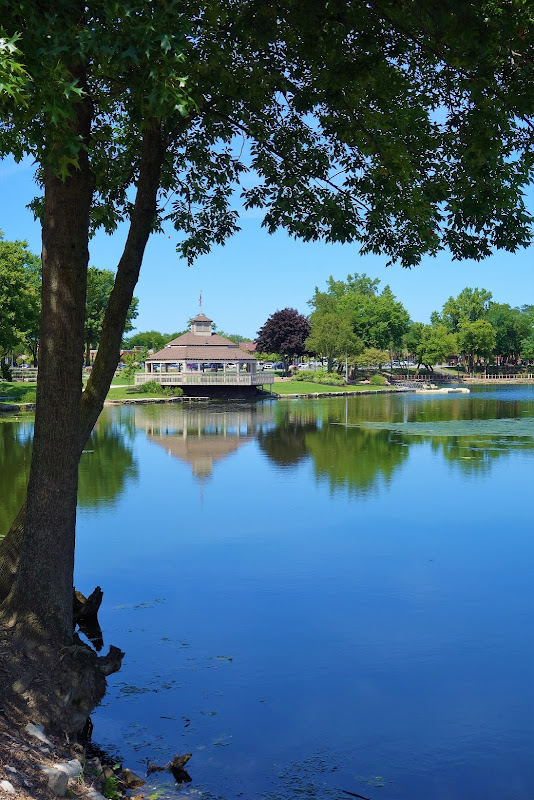Yesterday I wrote that much of Berea's fashionable south side was razed in the late 1800s to make way for more sandstone quarries, the economic lifeblood of the town in those days. After photographing a few of the remaining century houses I walked over to the quarry that displaced much of the town. Today it is a lake, Coe Lake, and it is the centerpiece of a city park located just to the south of downtown Berea. A gazebo and a picnic pavilion stand near the shore.
But Coe Lake extends considerably beyond that area. I would bet that there are a few Berea residents who do not know just how large the lake is. This was, after all, the "Big Quarry" in an era when Berea supplied sandstone to the world.
A pedestrian bridge crosses the lake to the opposite shore.
In 2009, with the help of a couple of science teachers from Berea High School, a nature trail and outdoor classroom were created on the other side of the lake.
A small meadow is planted with native prairie grasses and wildflowers.
There are informative signs telling the history and ecology of the region, and signs identify some of the species of trees along the trail.
I managed to capture a photo of this chipmunk before he scurried away.
During the summer the lake is home to ducks and Canadian geese.
I don't know what kind of aquatic bird this is, but he was feeding on fish in the lake.
Many 19th century gems of architecture were probably lost to the digging of the quarries, but Berea now has a lovely gem of a park and lake.















Lovely pictures! And Google Lens tells me that that bird is likely some kind of heron. (Finally caving and becoming a smartphone owner has its upsides!)
ReplyDeleteThanks, Meredith. Well, as far as the smartphone goes... I will continue to be a dinosaur. :-)
Delete